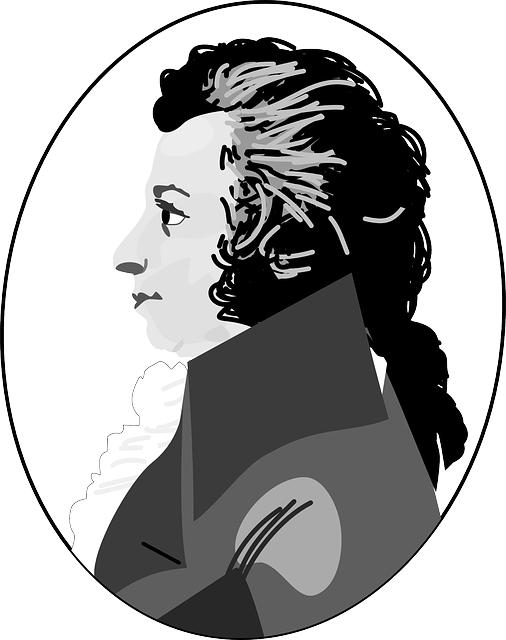In the heart of Victor Hugo’s timeless tale, where love, sacrifice, and redemption intertwine, there’s a melody that resonates with every chord of human emotion. While readers and audiences alike are swept away by the powerful narrative of Les Misérables, it’s the hauntingly beautiful score that truly brings the story to life. But who is the genius behind these unforgettable compositions? As we unravel the layers of this musical marvel, we’ll journey through the life and inspirations of the composer whose work transcends time, breathing emotional depth into Hugo’s poignant narrative. Join us as we delve into the soul of the music that not only enhances the story but also captures the very essence of the struggles and triumphs that define the human experience.
Exploring the Musical Genius of Claude-Michel Schönberg
When diving into the lush melodies and soaring harmonies of one of the most impactful composers of our time, you can’t help but be swept away by the emotional depth and complexity he brings to every score. Claude-Michel Schönberg doesn’t just create music; he captures the very essence of human experience. With works spanning decades, he has mastered the art of storytelling through song, effortlessly weaving themes of love, loss, and resilience. His knack for developing memorable tunes that linger in your mind long after the final curtain call sets him apart from many of his contemporaries. Each composition is like a vividly painted canvas filled with the rich colors of human emotion—from the heart-wrenching strains of “I Dreamed a Dream” to the rousing anthem of “Do You Hear the People Sing?”
Schönberg’s genius lies not only in the memorable melodies but also in his innovative use of musical motifs and lyrical narrative. By revisiting themes throughout his works, he creates a sense of unity and progression that resonates deeply with audiences. Consider these key traits that mark his distinct style:
- Dramatic Arcs: Each song serves a purpose, enhancing character development and plot progression.
- Emotional Resonance: The music transcends language, imbuing scenes with a heart-stirring intensity.
- Cultural Reflection: His scores often reflect socio-political themes, challenging the status quo through art.
| Musical Work | Year | Key Themes |
|---|---|---|
| Les Misérables | 1980 | Redemption, Sacrifice, Revolution |
| Miss Saigon | 1989 | Love, War, Cultural Clash |
| Martin Guerre | 1996 | Identity, Betrayal, Love |

The Emotional Depth of Les Misérables Through Its Score
When we dive into the world of Les Misérables, it’s impossible to ignore how the melodies and harmonies pull at our heartstrings. The intensity of the score not only complements the narrative but amplifies the emotional weight of each character’s journey. From the pen of Claude-Michel Schönberg, the music acts as a powerful undercurrent that guides the audience through the highs and lows of the story. Whether through the somber notes of “I Dreamed a Dream” or the hopeful strains of “Do You Hear the People Sing?”, each song resonates deeply, echoing the struggles and triumphs of the human condition. It’s as if each chord is a pulse, syncopating with the very beat of our own hearts.
Thematically, the score is a tapestry woven from various threads—love, loss, and redemption are beautifully interlaced. Just consider how the music evolves alongside the characters; Jean Valjean’s transformation is mirrored in the music’s shifting tone, from despair to hope. The use of recurring motifs is particularly striking, creating an emotional continuity that links each character’s experience to a universal theme. This could easily be seen as a musical conversation between the past and present, where echoes of the past inform the decisions of the present. Here’s a quick look at some standout pieces that highlight the emotional range within the score:
| Song Title | Emotion Conveyed | Character Connection |
|---|---|---|
| I Dreamed a Dream | Despair | Fantine |
| Do You Hear the People Sing? | Hope | Rebels |
| On My Own | Loneliness | Eponine |
With each note, Schönberg invites us on an emotional journey that transcends time, capturing the essence of struggle and humanity. The score doesn’t just accompany the story; it becomes a character in its own right, breathing life into Victor Hugo’s timeless work and ensuring that the emotional depth resonated long after the curtain falls. Like a river carving through rock, it shapes our experience, aligning our feelings with the characters’ struggles, and making the story not just something we watch, but something we feel deeply and intensely.
Unraveling the Themes and Motifs That Define the Music
When immersing oneself in the world of Les Misérables, it quickly becomes apparent that the score is not just background music; it’s a character in its own right, eloquently expressing the heartaches and triumphs of its narrative. The music serves as a powerful vessel for emotions, encapsulating themes of redemption, suffering, and hope. Each note carries a weight of historical context, echoing the struggles of the downtrodden and the relentless pursuit of justice. Think of it like a river, meandering through the valleys of despair and scaling mountains of aspiration, gracefully tying together the characters’ journeys and their collective heartbeats.
Moreover, certain motifs reappear throughout the score, weaving a tapestry that enriches the storytelling. These recurring melodic phrases act almost like a whisper, reminding us of the struggles each character faces and the resilience they exhibit. For instance, the motif associated with Jean Valjean is often laden with longing and yearning, mirroring his quest for personal redemption. On the other hand, the antagonistic themes, linked to Javert, resonate with rigidity and inevitability, symbolizing a relentless pursuit of the law. Here’s a quick look at some of the significant motifs:
| Character | Associated Motif | Theme |
|---|---|---|
| Jean Valjean | Melody of Redemption | Hope and Transformation |
| Javert | Staccato of Justice | Law and Order |
| Fantine | Lamenting Aria | Despair and Sacrifice |
| Marius | Romantic Theme | Love and Rebellion |

Transforming Literature into Melody: The Art of Adaptation
When you think about Les Misérables, what likely springs to mind are the deeply evocative scenes of struggle and redemption, but what truly transforms these narratives into emotional experiences is the masterful score that underpins them. The composer, Claude-Michel Schönberg, took Victor Hugo’s sweeping tale and wove melodic lines that resonate with the characters’ pain and hope. Imagine the struggle of Jean Valjean or the innocence of Cosette; Schönberg’s music captures these complexities, bringing the characters’ emotions to life in beautiful harmony. With each note, he paints a sonic landscape that complements the rich, historical context of the story while engaging audiences in an unforgettable way.
Schönberg didn’t just write melodies; he crafted an experience that echoes in the hearts of audiences long after the curtain falls. Consider how the emotional weight of a scene is amplified by a striking melody or a poignant lyric. The way he uses musical motifs allows us to *feel* the tension and release—almost like when the climax of a thrilling book leaves you breathless, hoping for a resolution. This intricate dance between *storytelling and music* forms a tapestry that not only reflects the original text but enhances it in ways that words alone simply can’t convey. It’s like pairing a fine wine with a sumptuous meal; each element elevates the other, resulting in a memorable feast for the senses.

In Summary
As we draw the curtain on this journey through the haunting melodies and soaring orchestrations of *Les Misérables*, it’s clear that the heart of this beloved musical beats strongly thanks to the genius of its composer. Whether through the rousing anthems that inspire hope or the poignant ballads that capture deep sorrow, the music transcends time, inviting us to feel the weight of every note. This score isn’t just a backdrop to the narrative—it’s a character in its own right, breathing life into Victor Hugo’s timeless tale.
So, the next time you find yourself lost in the stirring sounds of Les Misérables, take a moment to appreciate the artistry and emotion woven into each composition. It’s a reminder that music, much like the human spirit, can rise above adversity, leaving an indelible mark on our hearts. As we continue to explore the intersection of music and storytelling, let’s celebrate the composers who bring these stories to life, reminding us of the profound connection we share through melody and lyric. What other musical journeys await us? Only time will tell!



